The hops rhizomes were planted at the end of April, 2014, as described in an earlier post.
By mid-May: signs of life. Couple of little shoots springing up in one planter.
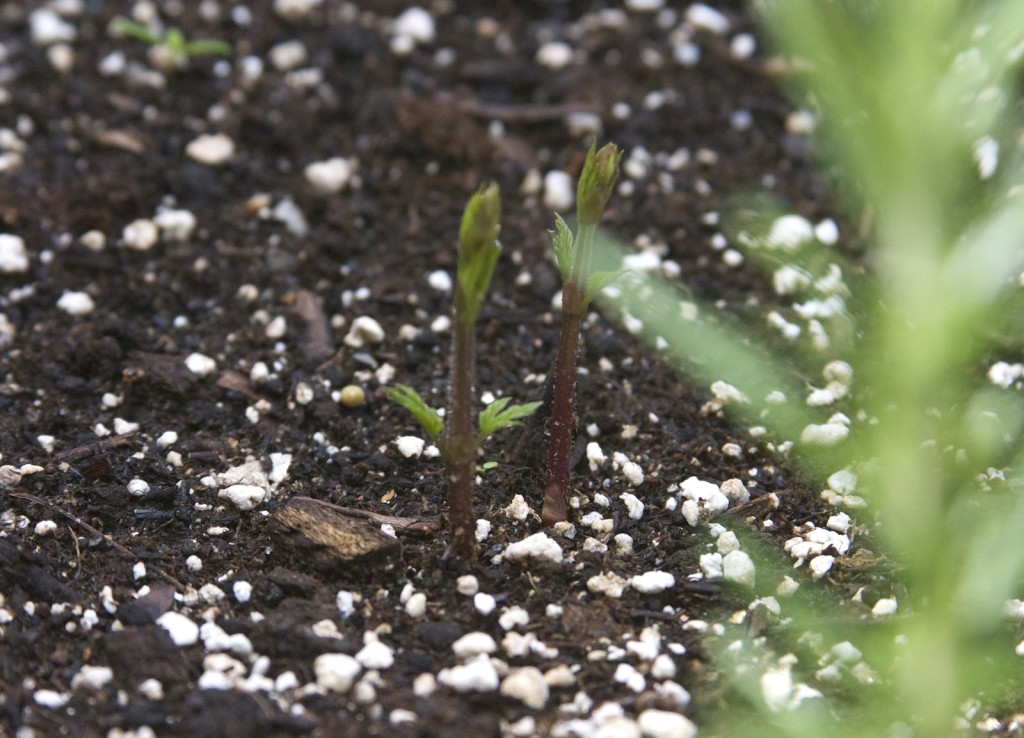
And then in another.
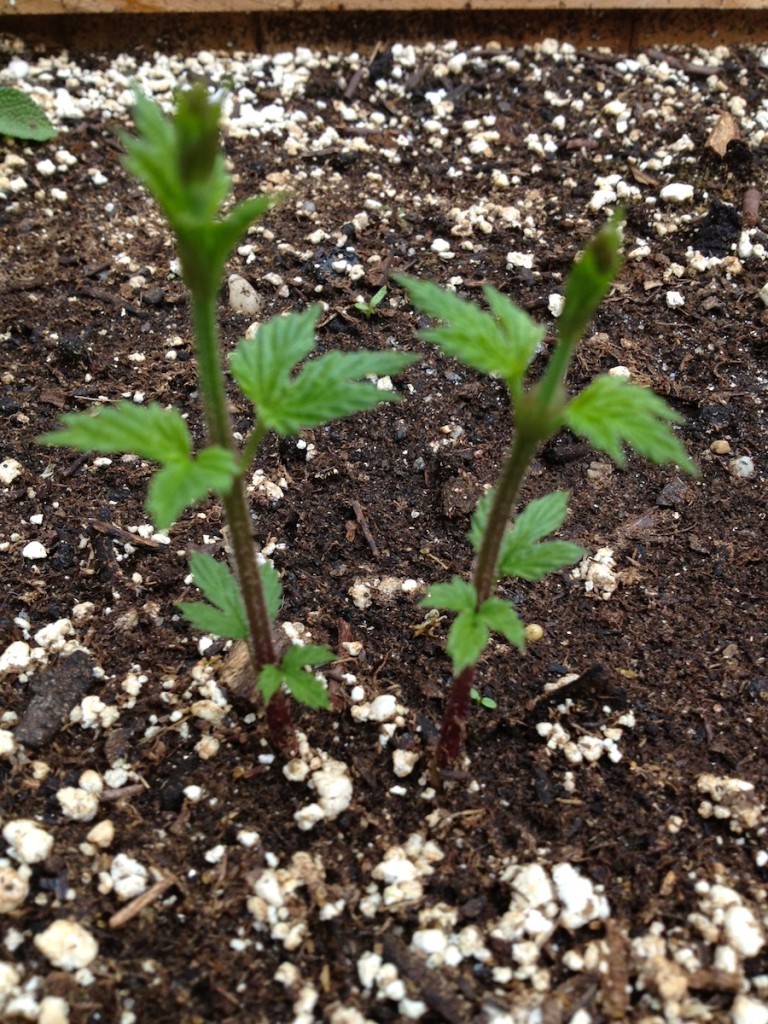
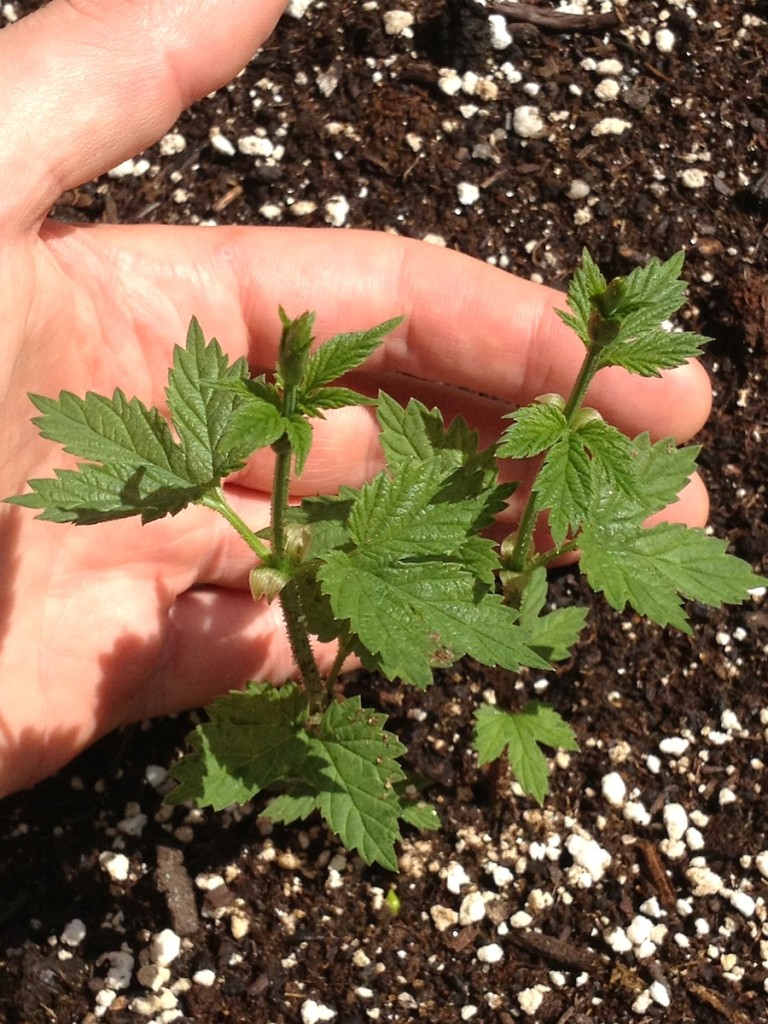
Within days, I had baby monsters on my hands.
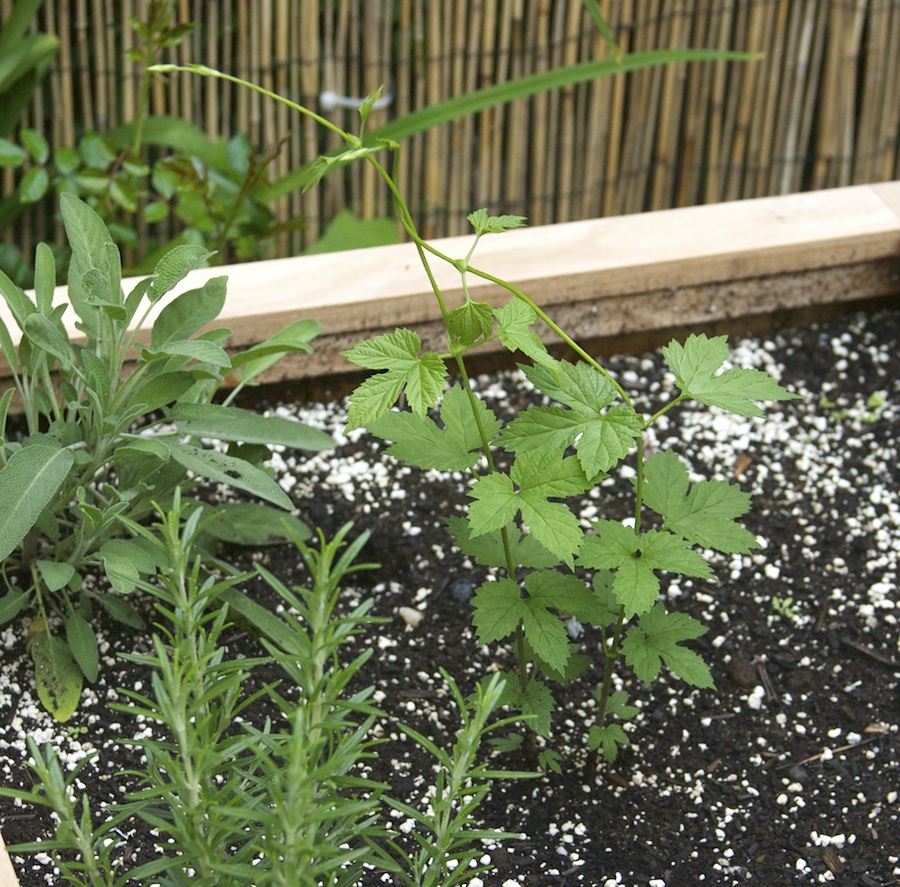
Every day they were climbing new things and investigating new nooks of their home base.
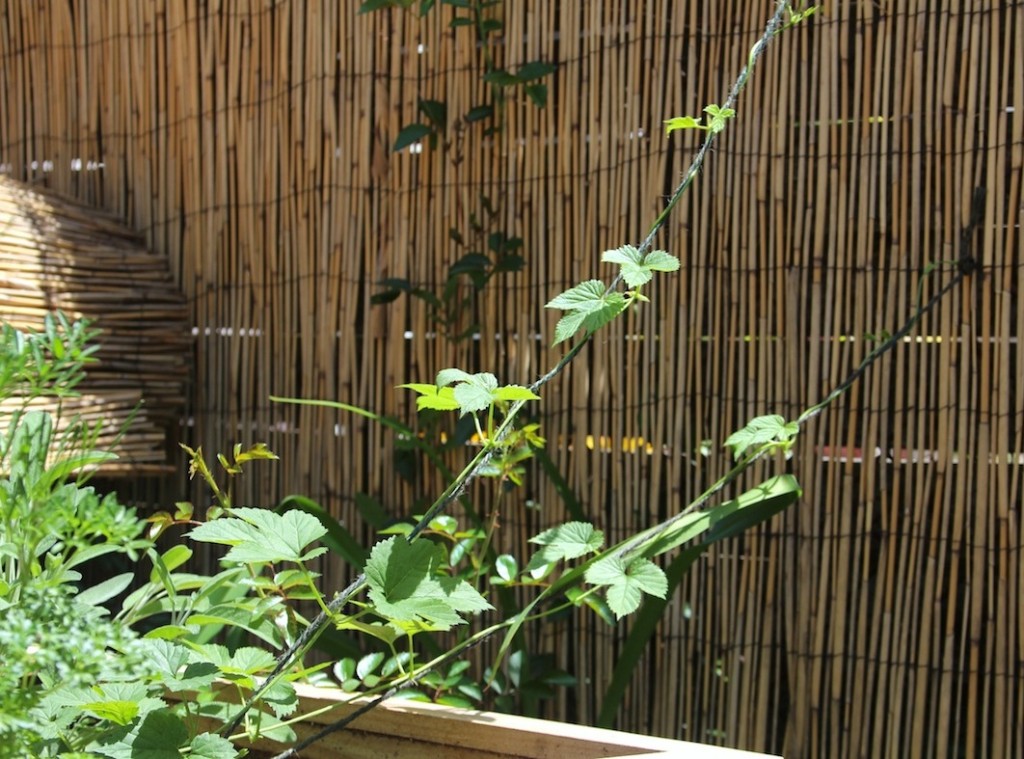
Each rhizome sent up about a dozen bines, maybe more over the season. Following what I’d read about them, I cut back the bines to three of the strongest and sturdiest and kept cutting new shoots back over the season. By the end of July, they were showing little hops cones forming.
Here they are, mixed in with some pole beans on the fence. Hops farmers traditionally grow hops straight up on strings or poles. I was hoping to train them to grow horizontally along my fence–really the only option I had at the time.
Technically hops’ climbing parts are “bines”, not vines, although to the layman it behaves much like a vine, climbing over anything it can grasp onto with snaking stems that are covered in fine prickly hairs which will scratch your skin if given the chance.
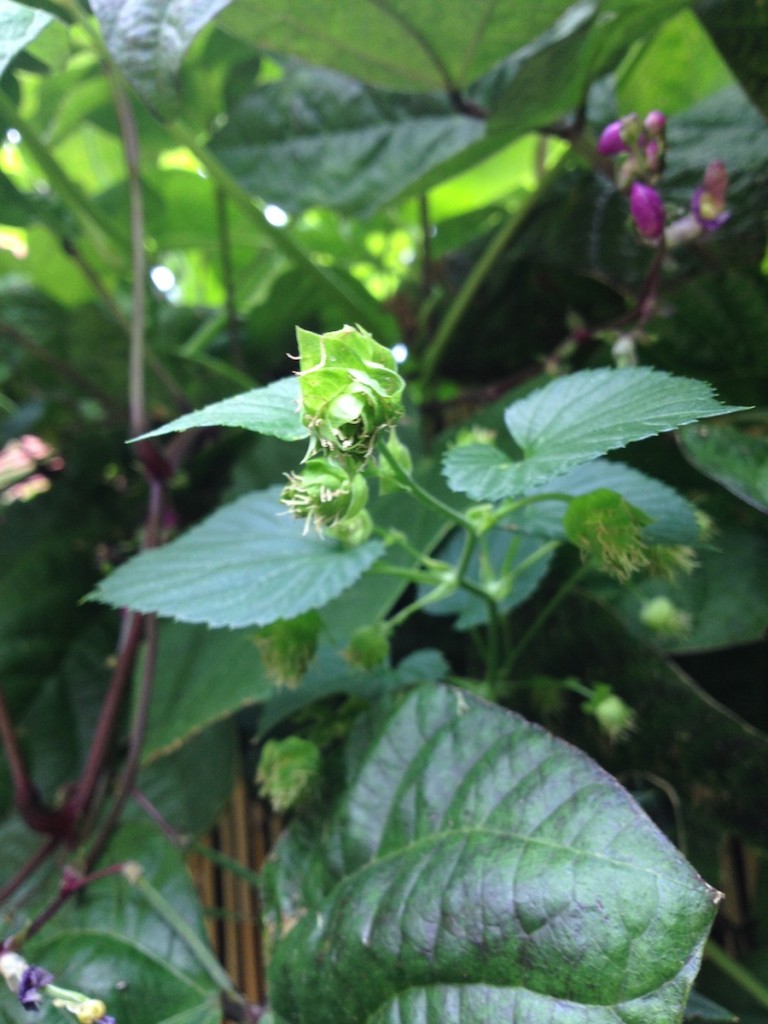
Quickly, they evolved into the familiar shapes you see on what seems like every beer bottle label you see these days. This is after only three months of planting–I was told it might take a couple of years to get cones. Must be all that Brooklyn sunshine.
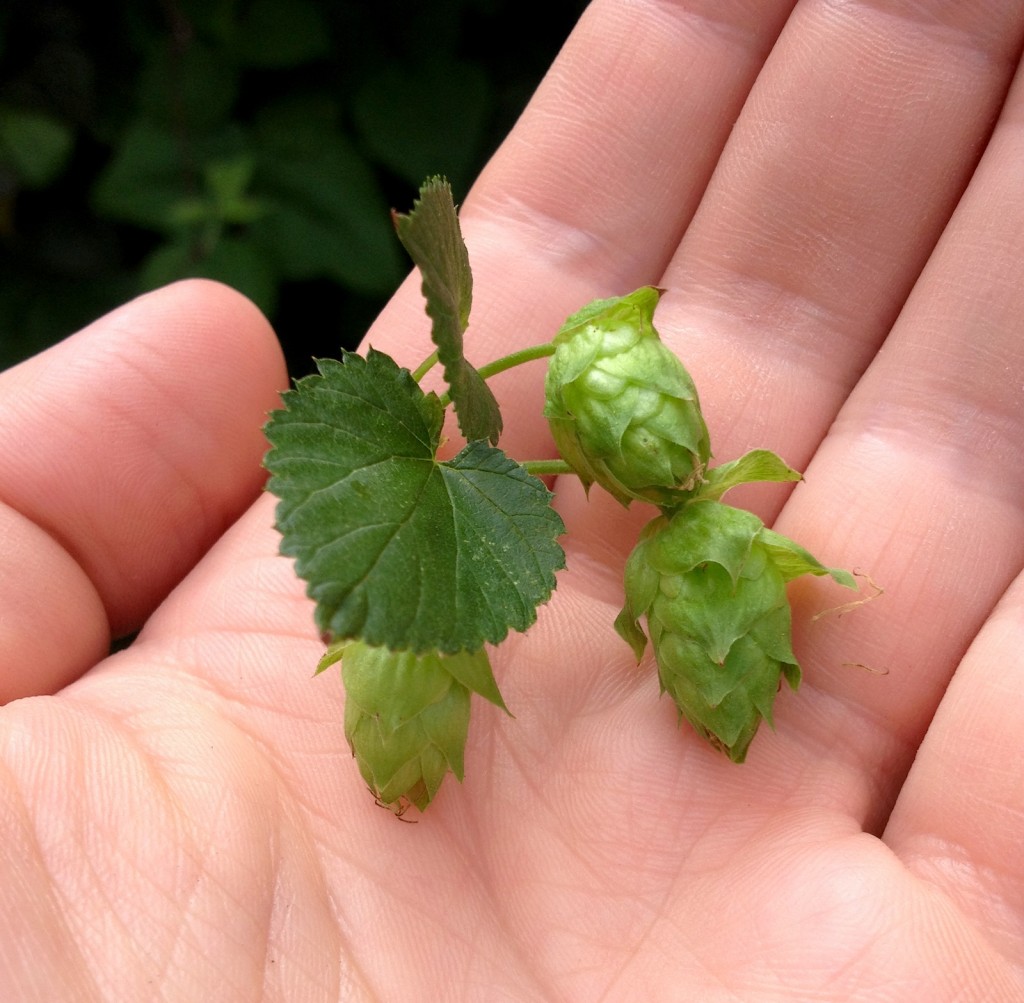
By late August the hops cones were a regular site on the east side of the garden, often competing with pole beans and morning glories for space on the fence. The rhizome on the west side did send out climbing bines, but fewer in number and produced no cones. I wondered if I would have to replace it next season. Instead, I replaced my camera 🙂

Many hops cones. Now I had to think about what to do with them.